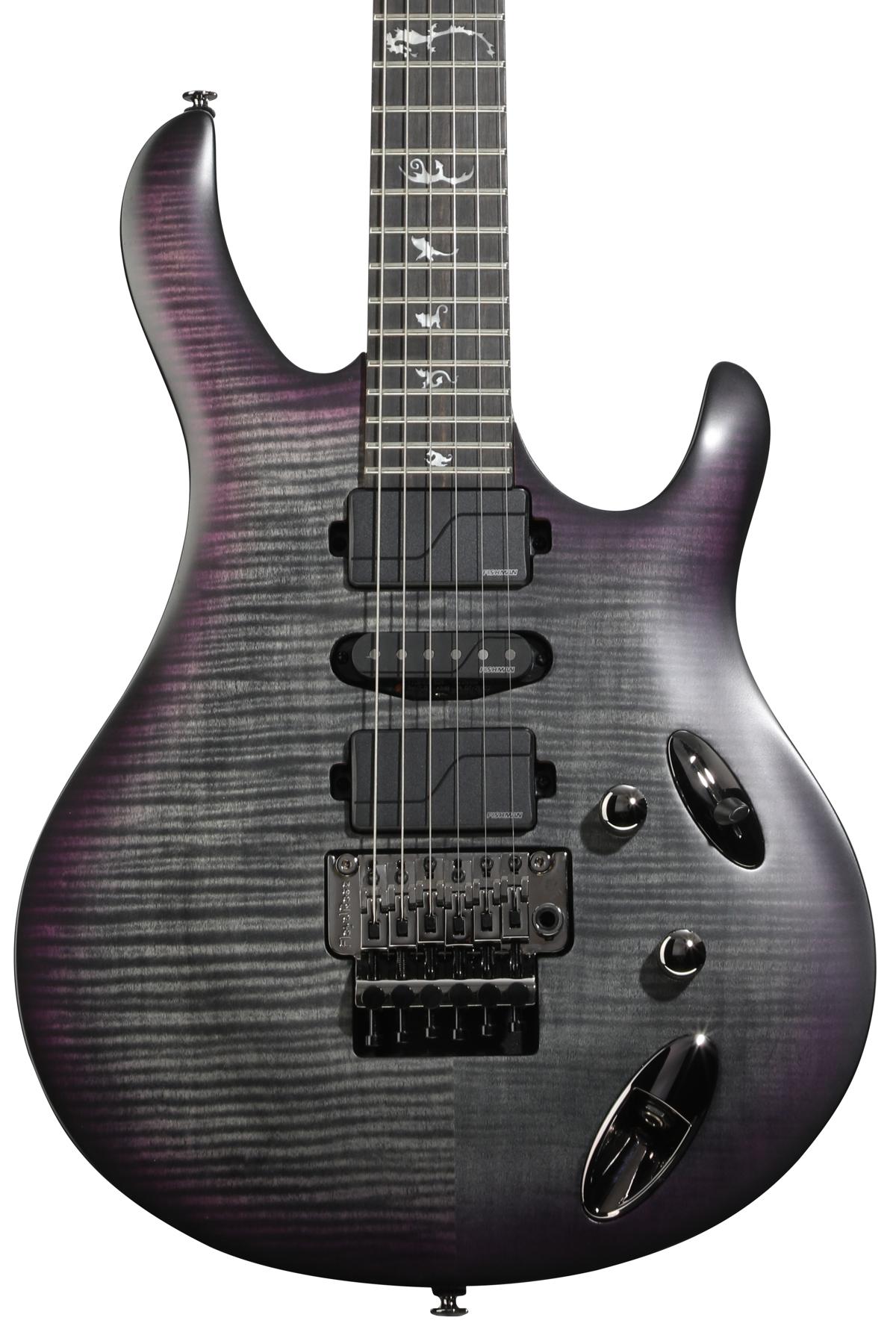As of late, Electro-Harmonix has been working overtime to produce impressive, cost-effective overdrives such as the East River Drive and Soul Food. Joining the fray is the new EHX Tortion, an all-analog, JFET-driven overdrive with a boost circuit capable of providing powerful distortion. Also equipped with a buffered bypass and a frequency-specific pre-gain knob, the EHX Tortion aims to scratch the itch for vintage lovers and modern warriors alike.
A Box of Plenty
The EHX Tortion’s thick, rugged case is screen printed with graphics that look like an amplifier, and the pedal’s top row of controls are arranged like any familiar combo or head. But in addition to volume, treble, mid, bass, and gain knobs, the EHX Tortion sports a 4-way pre-gain selector. The gain settings are divided into low and high categories, which are each subdivided into “full” or “tight” editions. The former offers increased bass frequencies, while the latter chops the low spectrum for a more focused output.
A second set of volume and gain knobs works with the switchable boost function. When boost is engaged, these controls replace the non-boost volume and gain, but the pedal’s other controls remain active.
Adjacent to the input jack is a boost switch jack that lets you turn the boost function on or off with a remote footswitch. This jack is wired in parallel with the onboard boost footswitch, so you can control the boost either way.
The pedal’s XLR-equipped DI output jack lets you connect directly to a front-of-house or studio mixer. This direct output includes all-analog circuitry to simulate a tone of a 4x12 cab. Shipped with a 9V adapter, the EHX Tortion can also operate with a 9V battery.
Ratings
Pros:
Great clarity. Huge range of gain for many genres.
Cons:
In normal mode, some gain is required to hear sound.
Tones:
Ease of Use:
Build/Design:
Value:
Street:
$179
Electro-Harmonix EHX Tortion
ehx.com
Crunch Time
Grabbing a Fender American Standard Tele, I turned the pre-gain knob to its lowest setting and reached for the gain control. I quickly discovered there’s no output if you turn the gain knob down completely, so you need at least a hair of this parameter to make some noise.
With these low settings, the perceptible gain is very minor—just the faintest dust of drive sprinkled over chords if you really dig in. Moving the gain knob up to 3 o’clock yields genuine overdrive. With the Tele’s single-coils, this was the sweet spot for the sound of an amplifier breaking up—that tightrope walk between clarity and a scoop of dirt, depending on your attack. Switching to a Les Paul, I found this territory at 9 o’clock—a much lower setting. It’s no surprise that, in general, hotter pickups draw a lot more crunch from the two low pre-gain positions.
The high pre-gain settings lead you into mild overdrive, something more akin to modern gain structures. Again, humbuckers get dirtier here than single-coils. Stepping on the boost adds a third sonic perspective, and this circuit has a huge amount of headroom in both its gain and volume knobs. The boost gain knob is fairly aggressive, and adds a bit of coloration even when it’s completely rolled back. This works well for low pre-gain settings if you need to call up moderate drive for a solo.
Moving gain into higher settings yields enough distortion to address the needs of metal riffers, especially when you scoop out the mids. The full and tight modes are still active with the boost engaged, so you can retain your carefully sculpted EQ character even when you hit the gas.
The Verdict
Creating a gain structure that’s highly responsive and usable across the board is no easy feat, yet Electro-Harmonix has pulled it off. The low pre-gain settings have a nice appeal for those who want just a little more out of their clean amplifier. Engaging the boost reveals the other side of the coin, unleashing plenty of frenzied distortion for those with much heavier tastes. And while the EHX Tortion isn’t cheap, its street price seems fair given the pedal’s versatility.








![Rig Rundown: Russian Circles’ Mike Sullivan [2025]](https://www.premierguitar.com/media-library/youtube.jpg?id=62303631&width=1245&height=700&quality=70&coordinates=0%2C0%2C0%2C0)


























